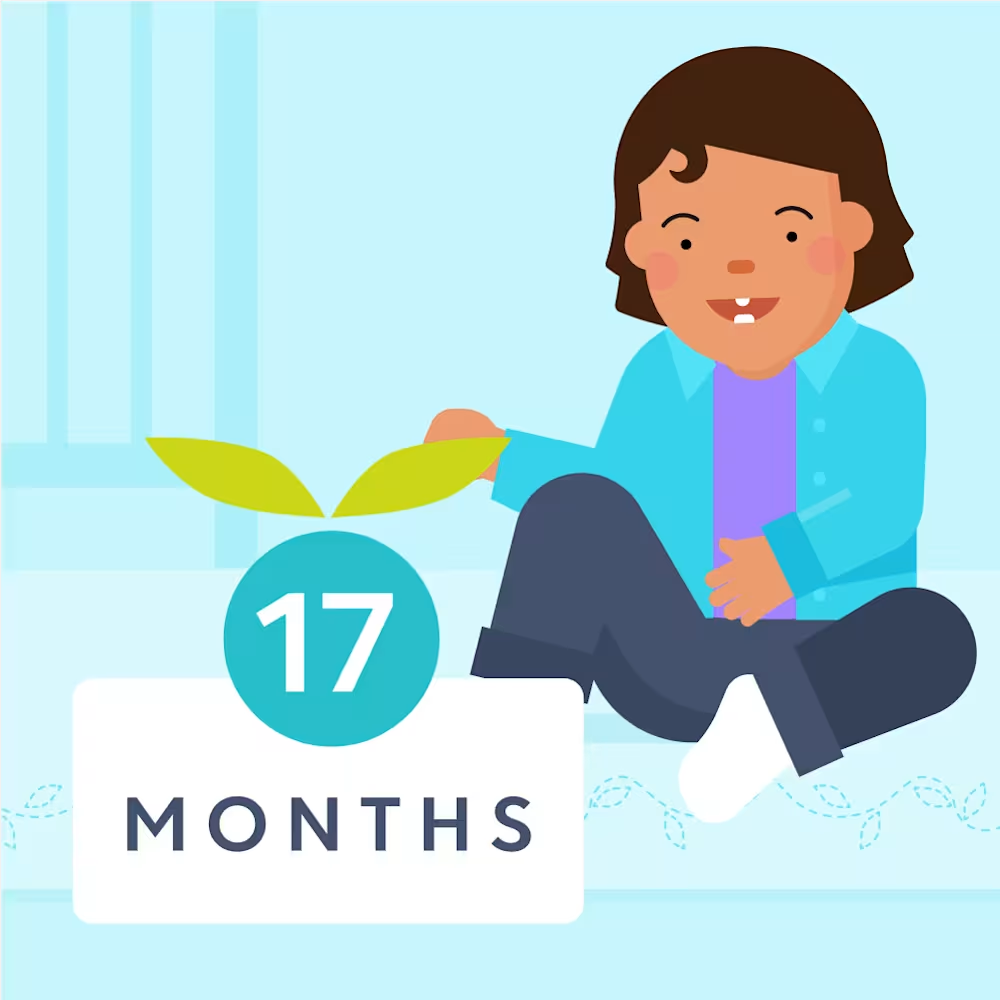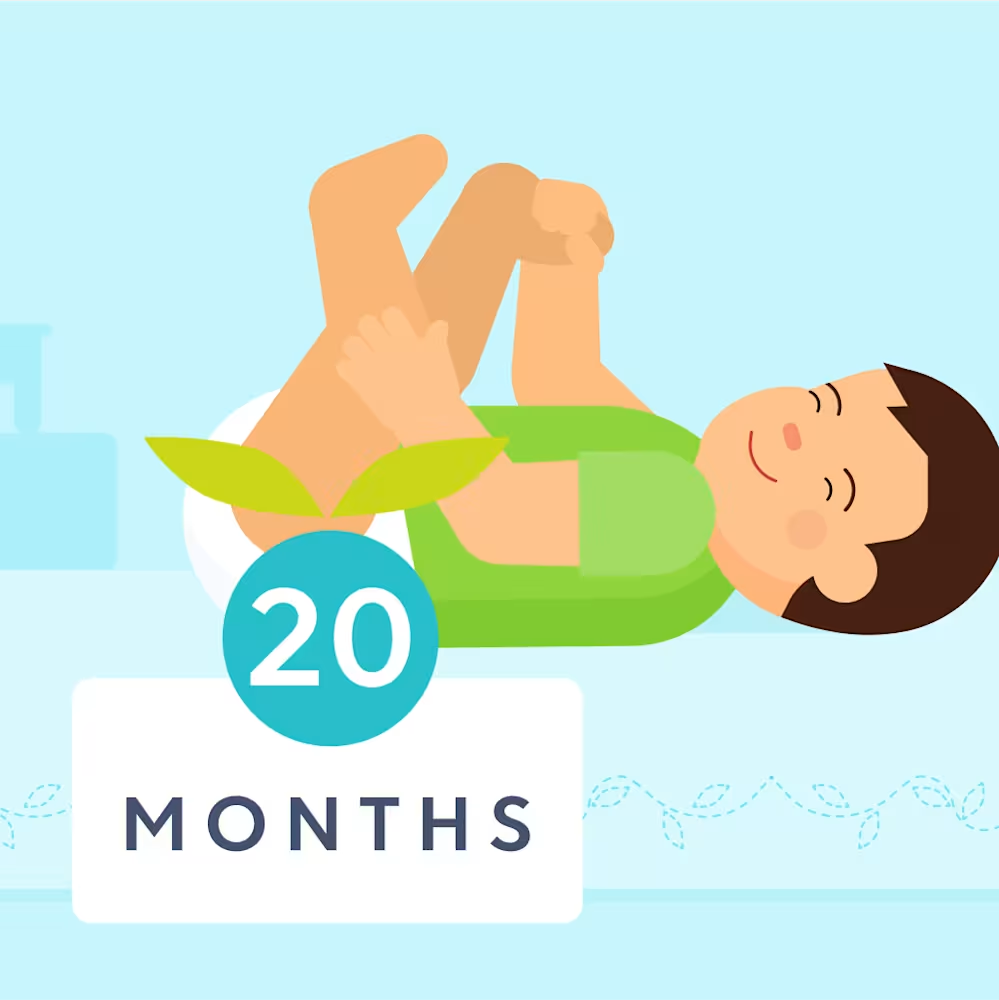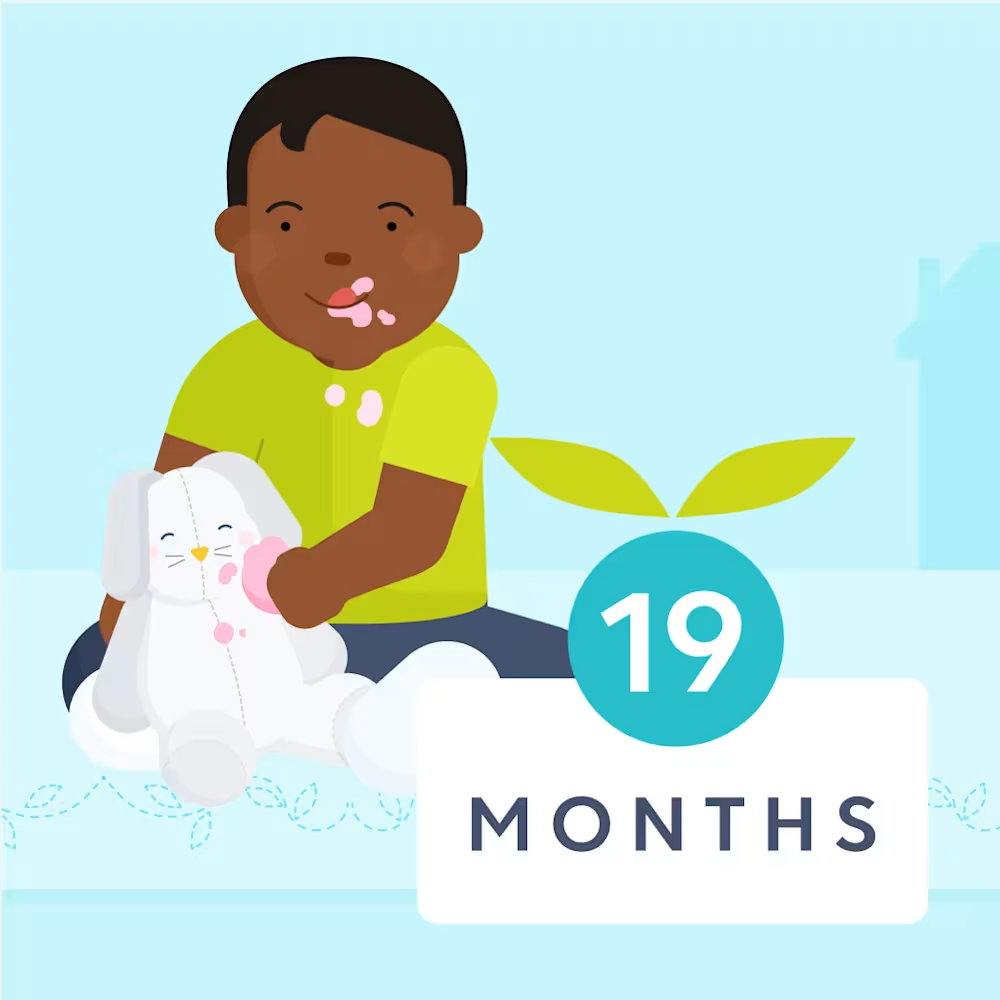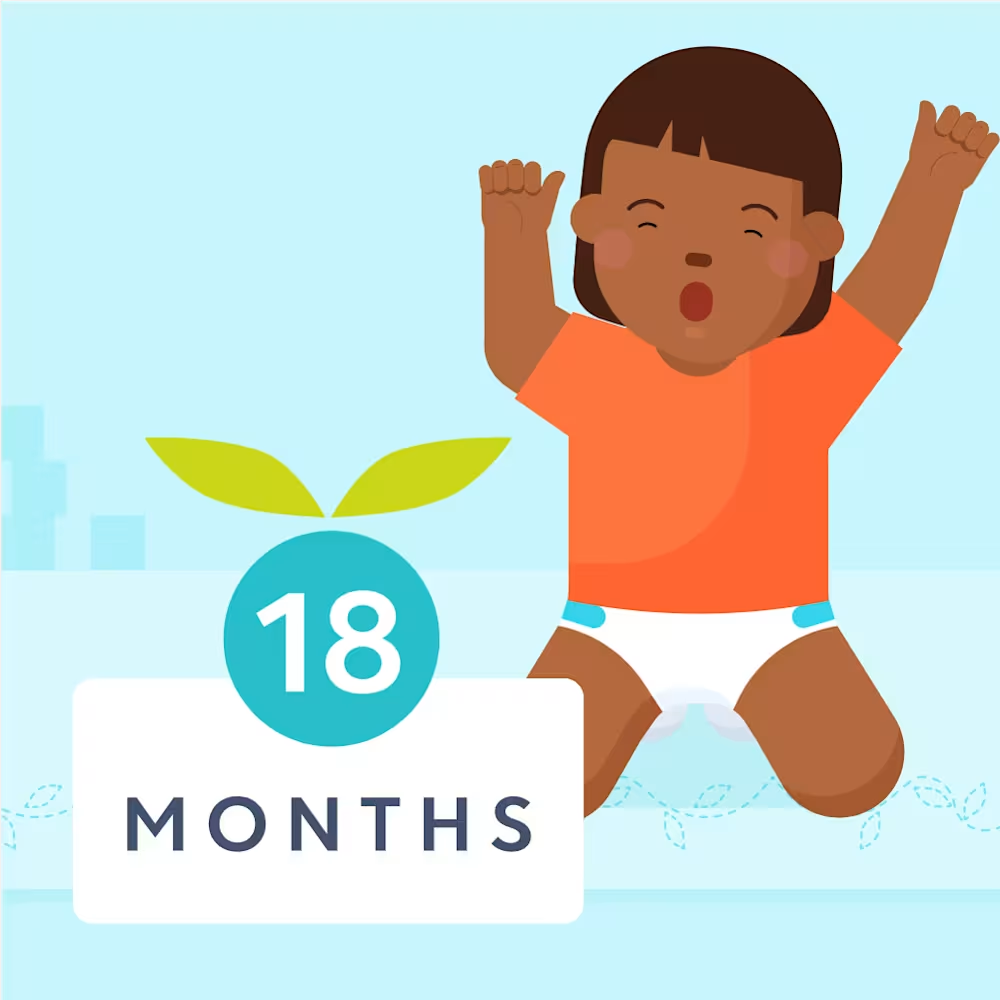Sleep training for 18 month olds and toddlers: Methods and tips
Updated Dec 02, 2025

We all know how important sleep is, however, getting enough of it is easier said than done, right? When it comes to toddlers, there are lots of different methods and approaches to choose from. It is wonderful that we have so many choices, yet it can also be overwhelming and quite frankly, daunting!
Ultimately, the goal of any method of sleep training is for your little one to be able to fall asleep completely independently without any so they have the skills to connect sleep cycles and sleep for longer. Deciding whether to sleep train or not is completely up to you. If your kiddo already sleeps well, and you’re not interested in sleep training, that’s understandable too.
Choosing the right approach for you and your toddler takes some thought and consideration. We are happy to help guide you!
Table of Contents
Can you sleep train 18 month olds and older children?
Yes, you absolutely can sleep train toddlers 18 months old and older. Making changes to sleep habits, or any habits for that matter, takes time. If you are patient and consistent with your approach, you and your little one will all be getting the sleep you need to be happy and healthy.
How many nights does it take to sleep train an 18 month old child or older?
The short answer is: it depends! The method you choose and how quickly your toddler adapts to change will affect how long it takes. Another thing to consider is how consistent you are — so readiness is key!
Typically the first couple of nights are the hardest, then from there your toddler should take less and less time to fall asleep. Be aware there can also be a setback night, or a couple of nights, where things get a little worse before they improve again which means progress can be a bit up and down. The trick is to stick with it and keep going.
If you are implementing a faster approach your toddler could be consistently sleeping through the night after a week. A more gentle sleep training method can take a few weeks.
Sleep training methods for 18 month old toddlers and older
| Sleep training method | Does it work for 18 month olds and older? |
|---|---|
| Gentle or gradual method | Yes! It often results in fewer tears depending on your child’s temperament. Some toddlers become frustrated if progress is too slow. Lots of reassurance is encouraged. |
| The chair method | Yes! A good midpoint method. It works by gradually retreating out of the room while providing less and less support. It’s successful as long as you do eventually leave the room. |
| Ferber method or gradual extinction technique | Yes! This can be a great method for families who want faster results or have other children in the house that cannot be left too long unattended. Initially, there can be some tears upfront but it is typically short-lived. Some toddlers become more upset with the constant “check-ins.” |
| Cry it out or total extinction | Yes! This approach can be for those children who want “all or nothing.” These toddlers find if you are no longer going to help them to sleep, they would rather figure it out on their own. Any sort of reassurance from you is more upsetting. If using this method, we do recommend using a video monitor or check-in every once in a while for safety. |
There are pros and cons for each method of . If you aren’t sure where to begin, start with a more gradual approach. If your toddler isn’t responding positively after a few nights, it is fine to switch methods.
Gentle or gradual sleep training method
The aim is to make changes to sleep habits very gradually. For example, you may swap nursing for rocking to sleep. Next, you would pat your toddler to sleep. Finally, you transition yourself out of the room (chair method) so your child is falling asleep completely independently. This process is also known as “fading.” This method suits those families who prefer to take things slow.
The chair method
This method is great if you are not ready to leave your toddler’s room just yet. Place a chair next to the crib and provide occasional physical and verbal reassurance. From there, you move your chair closer to the doorway over a few nights or up to a week. As you physically distance yourself from your child, you reduce the amount of reassurance given. Finally, you remove the chair altogether and walk out of the room before your toddler falls asleep. This method can be used as part of the gentle or gradual sleep training approach.
or gradual extinction technique
This is typically the most well-known sleep training method. It is sometimes referred to as “cry-it-out” (CIO) however it differs from “total extinction” because you can still offer responsive settling when in the room.
After placing your toddler into their crib awake, you remove yourself from the room and implement timed “check-ins”. These checks begin with between 1 - 5 minute intervals and gradually increase over time. You only reenter the room at your designated time. This method suits toddlers who find your presence in the room distracting.
or total extinction method
With this approach, you place your toddler into the crib awake and don’t return to offer any form of reassurance at all. Depending on your child’s temperament, some just do not find your presence or any physical touch reassuring. They prefer to figure things out on their own. With this method, we do strongly recommend using a video monitor or quietly checking from the doorway a few times for safety reasons.
Sleep training tips for 18 month olds and older
| Tip | Why it helps | What to try |
|---|---|---|
| Set the scene for sleep | Predictable routines cue your toddler’s body and brain that it’s time to rest. | Keep bedtime routines 30 - 45 minutes and pre-sleep nap routines 5 - 10 minutes. Make their sleep space dark, calm, and consistent. |
| Follow an age-appropriate schedule | The right timing for their age and stage helps prevent bedtime battles and night wakings. | Watch for sleepy cues and maintain a steady nap and bedtime schedule to balance sleep pressure and avoid overtiredness. |
| Embrace a "setbacks happen" attitude | Sleep isn’t always linear — disruptions are normal, even after making progress. | Expect occasional regressions from illness, travel, or teething. Stay consistent and keep encouraging independent sleep skills. |
Find more details below:
Tip 1: Set the scene for sleep
Children thrive on and predictability. Pre-sleep routines cue our children it is time for sleep. Whether or not they want to sleep is another thing! A bedtime routine may take between 30 - 45 minutes. A naptime routine may take between 5 - 10 minutes. When at home, consider keeping the , even during the day.
Tip 2: Follow an age-appropriate sleep schedule
Following can be really beneficial. Both under and over-tired toddlers will struggle to fall asleep and stay asleep, so timing is crucial. Mistimed sleep can stall progress when sleep training.
Tip 3: Setbacks happen
There are always going to be wakeful nights or nap resistance from time to time, even after sleep training. This could be due to illness, teething, sleep regressions, travel, mis-timings, or maybe for no obvious reason at all. If you can approach each sleep session “fresh” by continuing to encourage those independent sleep skills whenever possible, that setback should be temporary.
Can you sleep training 18 month olds and older for naps?
Yes! Naps are typically more challenging to master than nighttime sleep. Naps can also become short during sleep training causing overtiredness. If the nap has been shorter that day, it is fine to offer a slightly earlier bedtime. Work on the nap for approximately 90 minutes if you can. If you stick with it, naps will eventually become longer and easier over time.
Can you sleep train 18 month old and over twins?
Yes! How you do that really depends if your twins are sharing a room and how much extra help is on hand. Some families may temporarily separate twins during sleep training, especially if one is sleeping better than the other. Use in between the cribs to try to muffle some of the noise if they are room-sharing. Try to keep the twins on a similar sleep schedule.
Can you sleep train during the 18 month sleep regression?
Yes, you can. Learning those independent sleep skills can be achieved at any time unless your child is unwell. Progress can just be a little slower during a .
What to do if sleep training my 18 month old and over is not working?
Sleep training is all about helping our children form new independent sleep habits, and we know it isn’t always easy. Progress is often a rollercoaster ride rather than linear.
Here are a few things to consider if sleep training is not working for you.
Ensure your toddler is falling asleep from an awake state at the start of each sleep session. If you help sometimes and not others, it can be confusing and often results in more tears.
Switch methods or go a little faster. Sleep training isn’t about mastering each step before moving on.
Check how long it is taking your toddler to fall asleep and adjust the timings accordingly. Make sure you follow an .
Could there be any underlying medical reasons causing sleep difficulties? If in doubt, we recommend consulting with your pediatrician.
Reach out to us for a customized Sleep Plan through .
Takeaway: Sleep training for 18 month olds and older toddlers
It's a personal choice: Whether you decide to sleep train, and what method you choose, depends on what aligns with your own parenting style and the temperament of your child.
Setbacks are normal: At 18 months and older, toddler sleep may ebb and flor based on external factors like teething, illness, and changing sleep needs.
Celebrate progress however small it might be. Try not to feel disheartened if your toddler needs a bit more time to master those independent sleep skills. Be consistent and set realistic expectations.
Sleep training 18 month olds and older FAQ
If you're curious about what lies ahead with sleep training, glimpse into the future to see what you might experience with . Also check out a refresher on .
Share article:
Note: The content on this site is for informational purposes only and should not replace medical advice from your doctor, pediatrician, or medical professional. If you have questions or concerns, you should contact a medical professional.
1 Sources
Table of Contents
Share article:











